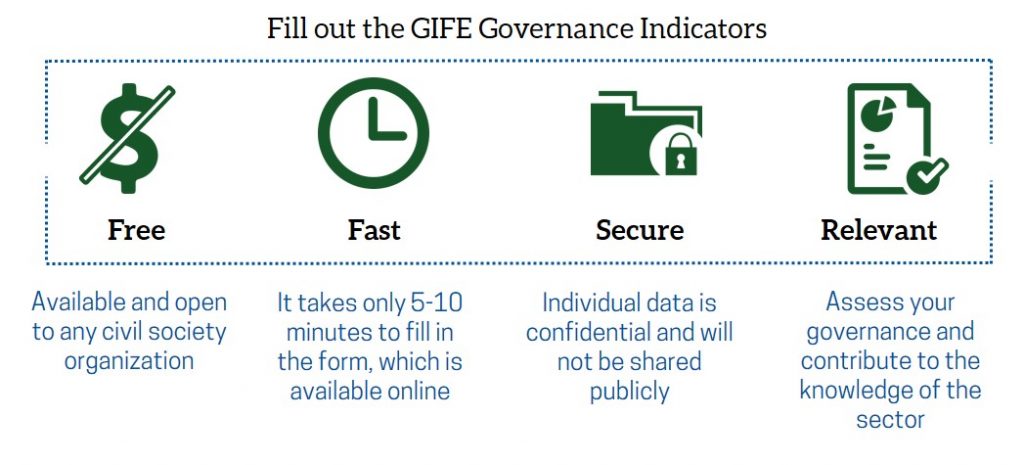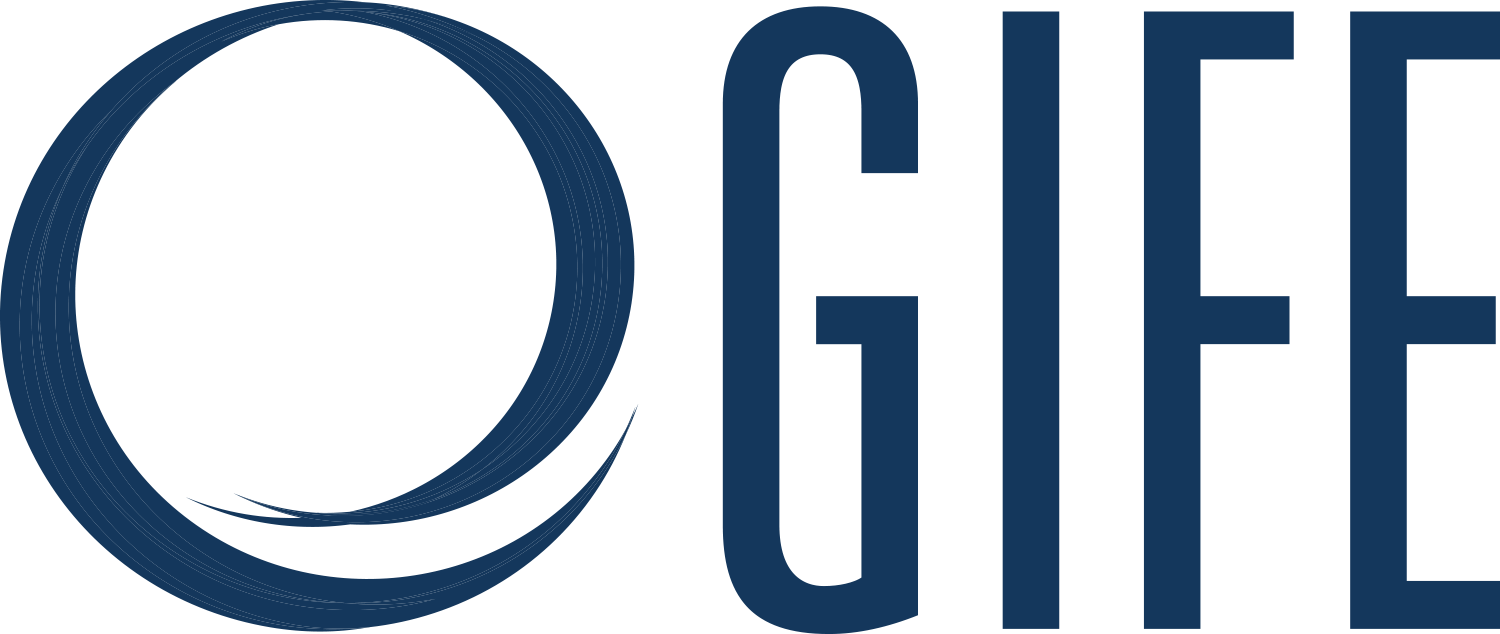Self-assessment

Who are the GIFE Governance Indicators intended for?
The indicators are intended for any non-profit association or private foundation that develops public interest projects. Although the indicators use the Guide to Best Practices in the Governance of Corporate Foundations and Institutes (GIFE, IBGC, 2014) as a reference, they are not restricted to corporate institutes and foundations or even to the GIFE members. Thus, the indicators consider the specificities of the entire sector in relation to governance, and can be applied by civil society organizations in general – regardless of their size, area of activity or profile. However, these indicators are not recommended for companies, since companies have distinctive governance requirements and practices as compared to civil society organizations, and, above all, they already utilize consolidated tools for evaluating their practices in this area.
How is the self-assessment tool structured?
Principles for the development of the indicators:
- Are applicable to any type of civil society organization;
- Cover the basic minimum necessary in terms of good practices of governance;
- Address various aspects of governance, even if the deliberative board is the preeminent body in the organization;
- Are formulated as general principles, and do not necessarily regulate how organizations should develop their procedures in specific details, thus allowing them to adjust their guidelines to their needs and peculiarities;
- Foster a debate on governance practices within the organizations;
- Use the Guide to Best Practices in the Governance of Corporate Foundations and Institutes (GIFE, IBGC, 2014), the bibliography in the field and other similar experiences as a basis. Access the page Other references;
- Comply with current legislation, especially the Law no. 13,019 / 2014, known as the Regulatory Framework for Civil Society Organizations.
Tool structure
The self-assessment tool is structured through indicators that serve as guides or benchmarks on governance of civil society organizations (CSOs). The indicators are subdivided into components that, in turn, are structured in 5 themes that correspond to the essential dimensions of governance.
Questions and answers
The indicators have been framed in such a way as to allow organizations, wherever possible, to objectively verify whether or not the situation as described in the indicator has occurred. In some cases, they include questions of self-perception that are not objectively verifiable, but such that the organization must respond to according to its own assessment.
Most indicators require binary responses (yes or no). In some cases, however, where there are more than two options of response, it is only possible to select one.
Should the need arise, indicators include a protocol – which offers additional explanations and recommendations on the indicator – in order to facilitate its understanding and to deepen the proposed discussion.
Method of calculating scores
The scores of each indicator were proposed on the basis of an understanding of their relevance, with different weights, them being:
- 1 – the lowest, and 3 – the highest
The score of each theme and the total score are calculated by the sum of the values assigned in each indicator.
- The themes are assigned a higher or lower value according to the number of indicators they have and their respective weights.
The final score is in percentage, and is composed of thematic scores and the overall score, after the completion of the self-assessment questionnaire online. For better viewing, the percentages are displayed without decimals and are rounded off.
Next steps
This is the first draft of the questionnaire and does not aim to cover every aspect of the issue of CSOs’ governance. By using the self-assessment tool, by expanding the debate on the topic, and by providing an analysis of the general landscape of organizations in terms of governance issues and their evolution, indicators can be modified and expanded later on. Some improvements could be in the following direction:
- Incorporating other relevant aspects of governance that have not yet been addressed, broadening and diversifying levels of demands on governance practices;
- Taking into account the specifics of organizations, providing additional questions depending on the particular types of organizations or sectors.
- Improve the way the results are published, by comparing the respondents with each other, and always in an aggregated way, and preserving the anonymity of individual organizations.
- Provide suggestions for improvements on governance based on the evaluation conducted.
How to use the GIFE Governance Indicators?
1. Who can fill in the questionnaire?
Any representative of an association or foundation can fill in the questionnaire. However, we believe that an organization employing collective efforts to fill in the questionnaire constitutes a valuable process by itself. The involvement of several areas of the organization in filling in the questionnaire and, mainly, in the analysis of the results obtained contributes to the organizational planning and self-assessment, and for the results to be in fact incorporated into the organization, thus generating effective action plans. In this sense, the process of self-assessment can be as important as the result of the self-assessment itself.
2. How often can indicators be applied?
There is no time limit – minimum or maximum – for the self-assessment. Organizations should apply it as often as they see fit or suitable for their needs. We recommend that the indicators be filled in each mandated term of the organization’s board, but with a minimum frequency of every 2 years, if the mandated term of the board exceeds this period. In this way, it is possible for the organization to follow its trajectory in relation to governance and to develop a continuous process of improvement.
3. How to access the system?
The online questionnaire system can be accessed at the beginning of this page. To do so, simply fill in the identification form with the basic data of your organization, required only for our internal records. We emphasize that no information identifying the respondent organizations will be disseminated or employed. In order to monitor the use of this tool, we ask organizations associated with GIFE to identify themselves in the access form for the online system.
4. How to insert the answers?
To account for the results, responses must be inserted into the online platform system. We emphasize that it is not possible to pause the questionnaire in the system to continue at another time. This means that when one starts filling in the questionnaire, it has to be completed at one go in order to get the result.
5. How long does it take to fill in the questionnaire?
Online completion time is 5 to 10 minutes, but the gathering of information may vary according to the process established to fill in the questionnaire and the availability of such information.
6. Who has access to the data provided?
The results will only be accessible in the system for the person in charge of filling the questionnaire, and will not be made available to any other representative of the organization or outside it. The answers and scores will also be sent to the e-mail registered in the form so that they can be discussed and archived by the organization. This makes it possible to compare the results of different periods, thus contributing to the monitoring of the evolution of the respondent’s governance practices.
7. How is the data shared?
The data is confidential and will not be disclosed in an individualized manner. With the information collected from the use of the self-assessment tool by CSOs, reports will be produced on the status and progress of governance in the sector but it will only include aggregate data, without naming the respondent organizations. Nevertheless, bearing in mind the importance of transparency for the sector, and the relationship between transparency and governance, GIFE encourages organizations to incorporate the results and analysis of their self-assessment into their annual reports or other institutional tools of communication with society. For more information about our views and work on transparency, access the GIFE Transparency Panel.
